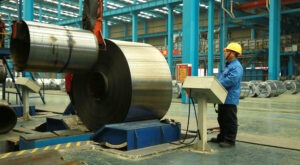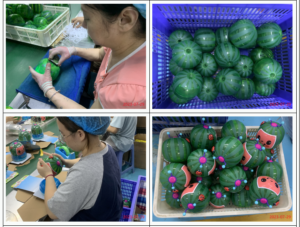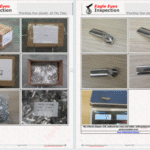Production Monitoring(PM) means an on-site quality Inspection performed every day of your production. The inspector watches your factory, enforcing your specifications, reassuring factory implementing required quality control, selecting random samples for inspection and eliminating defects. You receive daily report regarding quality and completion status. Production Monitoring gives you a wide look at all the manufacturing processes at work in the factory, keeps your product consistent and to your specifications, and helps you prevent shipping delays.

Benefits of Production Monitoring
Convenience and Efficiency
– Online inspections can be conducted remotely, saving time and reducing the need for physical travel.
Cost-Effective
– Eliminates expenses related to on-site visits, such as transportation and accommodation.
Faster Turnaround
– Digital processes speed up inspection reports and decision-making.
Accessibility
– Allows inspections to be performed anytime and anywhere with internet access.
Enhanced Record-Keeping
– Digital documentation ensures better accuracy and easier retrieval of inspection records.
Improved Safety
– Reduces risks associated with physical inspections, especially in hazardous environments.
Real-Time Collaboration
– Enables instant communication between inspectors and stakeholders for quicker resolutions.
Scalability
– Can easily handle multiple inspections simultaneously across different locations.
Eco-Friendly
– Minimizes paper usage and carbon footprint by reducing travel.
Automation & AI Integration
– Advanced tools can assist in detecting issues and analyzing data more efficiently.

Key Processes of Production Monitoring
Online inspections involve several important steps to ensure accuracy, efficiency, and compliance. Here are the key processes:
1. Preparation & Planning
Define inspection objectives and scope.
Identify required documents, checklists, and standards.
Schedule the inspection and notify relevant stakeholders.
2. Digital Documentation Review
Collect and verify digital records (e.g., permits, certifications, maintenance logs).
Use cloud storage or inspection software for easy access.
3. Remote Inspection Execution
Conduct live video inspections (via Zoom, Teams, or specialized platforms).
Use sensors for real-time data collection (if applicable).
Follow a structured digital checklist to ensure consistency.
4. Data Collection & Analysis
Record findings with photos, videos, or automated reports.
Use AI-powered tools to detect anomalies (e.g., defects, compliance gaps).
5. Reporting & Documentation
Generate digital inspection reports with key findings.
Include evidence (images, videos, sensor data) for transparency.
Share reports instantly with stakeholders via email or cloud platforms.
6. Follow-Up & Corrective Actions
Identify non-compliance issues and assign corrective actions.
Track resolution progress using digital task management tools.
Conduct follow-up inspections if necessary.
7. Record Keeping & Compliance
Store inspection records securely in a centralized database.
Ensure compliance with industry regulations



